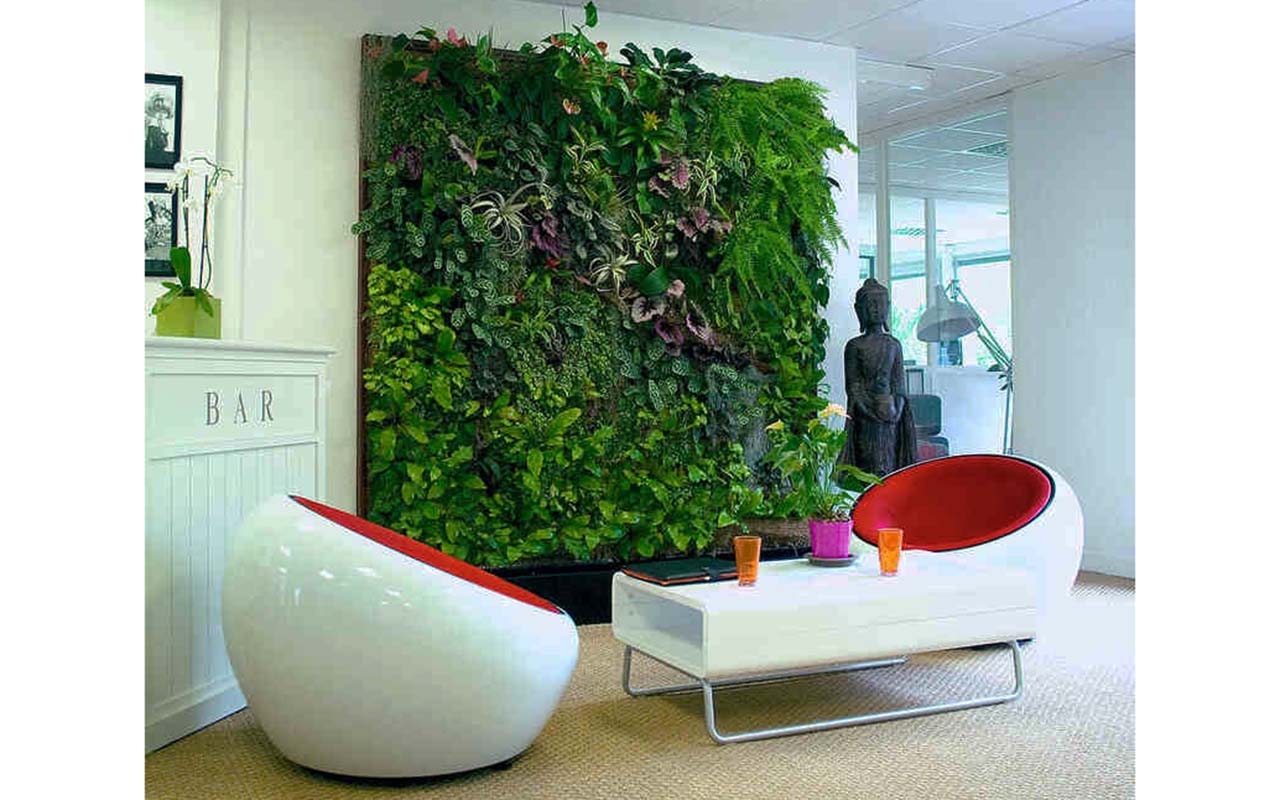DO IT YOURSELF: A living wall

What you need to know:
- There is a myriad of ways to style your living wall. For dramatic effect, use long, trailing plants, like ferns and ivy, which will make your wall look full. Alternatively, pot fruit and veg, such as tumbling tomato bedding plants, or create a herb garden with a selection of your favorites.
A living wall makes for the perfect addition to a compact garden. Using the vertical space you have will add character and more greenery, all without taking up any of the little floor room you have. Learning how to make a living wall anywhere is one brilliant project.
How do living walls work?
Living walls are usually created with modular systems fixed to a wall; they can cover a whole wall or a small section to keep the plants on display all watered and alive. Commercial green wall or panel systems are either soil-based modules, soil-based fabric membranes or hydroponic systems that rely on water and fertiliser fed to the plants from a tank system. They make great garden wall ideas for an eclectic finish.
You will need
.Pocket planters
.Drill, screws, rawl plugs (for attaching to walls)
.Hammer and nails (for attaching to fences)
.Plants in 13cm pots (number dependent on how many pockets you have to fill)
.Topsoil
Find the right space
You can site your living wall anywhere; the trick is really to choose the right plants for that part of the garden, just as you would a border. If you are planning a living wall in a bright area, then this will influence your plant choice. Above all, make sure you can access all areas of the living wall for watering and maintenance.
Prepare the surfaces
Living walls can get damp, so you need to know what wall or surface you are working with, to protect it. An easy way to do this is to either use a membrane or ensure there is a gap between the green wall and your chosen garden wall. Ensure any wooden surfaces you use have a fresh lick of good exterior paint. If your living wall will be hanging above the decking, make sure you have treated it appropriately so that water running out of the planters will not cause damage.
Fix your vertical planters
Fix the planters to the wall, making sure they are spaced equally apart and that each row is tucked snugly underneath the one above. It is best to use screws if you are attaching them to a wall; a sturdy fence might take strong nails.
Choose your plants
There is a myriad of ways to style your living wall. For dramatic effect, use long, trailing plants, like ferns and ivy, which will make your wall look full. Alternatively, pot fruit and veg, such as tumbling tomato bedding plants, or create a herb garden with a selection of your favorites. Use long-living, disease-resistant plants that are light with shallow roots, as they will have restricted root space.
Pot your plants
Fill 13cm/the size you need pots with soil and add your plants, making sure they are planted firmly and that the pots are topped up with more soil. Once you have done that, all you need to do is drop the pots in the pockets, step back and admire your handiwork.
Irrigation and maintenance
For hand watering, water the top plants when they are looking a little sad and the whole wall will get a good soaking. Living walls should last for about four years.
SOURCE: realhomes.com




